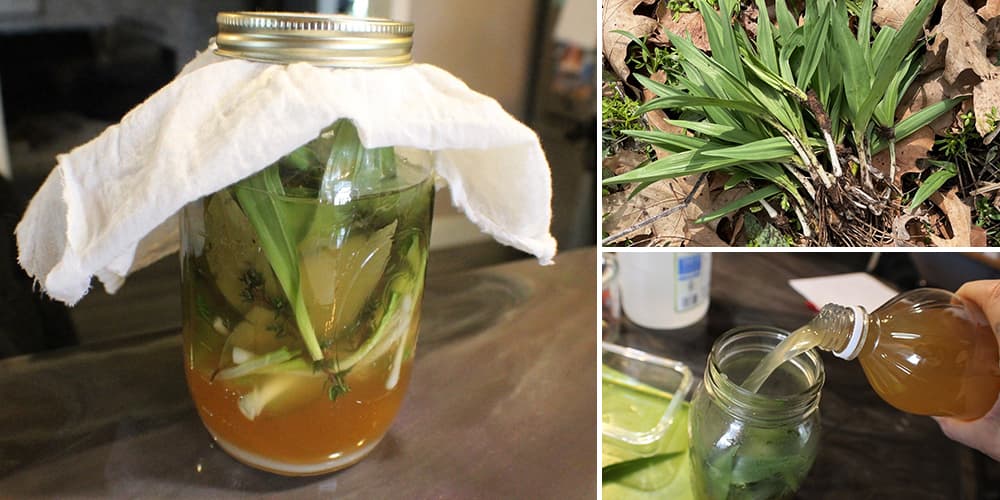
DIY Anti-Inflammatory Ramp Vinegar
Throughout the Eastern half of the United States and Canada, a particularly highly sought-after vegetable can be found growing in the spring season. These garlicky seasonal treats are known as ramps, wild leaks, spring onions, or ramsons. They are similar to onions in appearance but closer to garlic or chives in their pungency and spiciness.
Like most wild foods, ramps are nutrient-dense vegetables with high levels of vitamins and minerals. The Cherokee used to seek them out and used them to repair and revitalize their bodies after bouts of winter illnesses.
I will talk a little about ramps and then show you how to identify and prepare them in a tasty ramp vinegar that will elevate your favorite dishes and boost your health for months to come.
What Are the Health Benefits of Ramps?
Ramps are a wild edible with a long history. They are highly prized by many individuals, especially in the Appalachian region of the United States, where they have remained a part of the local cuisine and are thoroughly enjoyed by those lucky enough to know about them. They can be found on the dinner tables of families with a deep connection to the land they call home as well as on the menus of five-star restaurants.
Ramps are chock full of Vitamin C and K, which boost immunity and help repair and maintain tissue and bone. They are equally high in antioxidants, which fight inflammation, and prebiotics, which support gut health. Like garlic and onions, ramps contain natural sulphuryl compounds that provide a range of health benefits to the body.
Your body needs sulfur to create and fix your DNA and safeguard your cells against potential harm. Sulfur also plays a crucial role in supporting your body’s metabolism and maintaining the health of your skin, tendons, and ligaments.
People seek out ramps during their limited early season appearance, eager to savor their unique flavor or preserve them. However, it is important to exercise caution when harvesting these plants to avoid overharvesting and potentially depleting them from a particular growing area.
How to Find Ramps
Ramps take a very long time to grow- anywhere from 18 months to 7 years! They can usually be found growing in mature hardwood forests before the leaves come on the trees. Ramps are bright green with a yellow hue and look like small onions with large, flat leaves. At best, they only get about six inches tall. Some of them have white stems, while others flaunt shades of red and purple between the heavy top and bulbous bottom. Ramps thrive in the presence of hardwood trees like beech, birch, maple, tulip poplar, buckeye, basswood, hickory, and oak. They do well in a variety of lighting conditions and soil moisture levels.
They grow in patches. Ramps tend to spread, but this process is long, so it’s best to harvest them selectively, leaving several plants to keep the patch going. You can also cut them off just above the underground bulb. If you really want to ensure your ramp hunting spot will be there for years to come, you can use both techniques.
Identifying them is easy. Ramps always have one to three leaves and no more. If you pick a portion of one of the leaves and roll it around with your fingers, it should smell like garlic. This is one of the key ways to identify ramps. However, other plants may look like ramps, like lily of the valley, which is deadly. You must make sure what you’re harvesting is truly a ramp, and if you don’t know, don’t eat it! I learned most of my knowledge and skills from this foraging book.
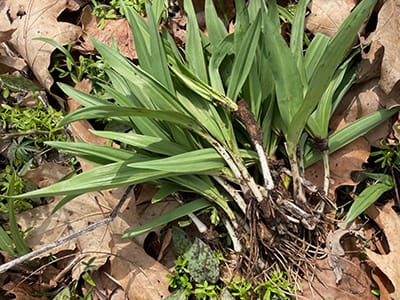 You’ll need a blunt stick with a bit of a tip to wedge just under the ramp so that you can pry it up, as these bulbs are deeply rooted in the earth. They are insanely deep! You can try a small shovel if you can use it without destroying the other ramps around it. But you cannot pull ramps out of the ground with your hands. Once you’ve harvested a nice handful of them, you’re ready to make ramp vinegar.
You’ll need a blunt stick with a bit of a tip to wedge just under the ramp so that you can pry it up, as these bulbs are deeply rooted in the earth. They are insanely deep! You can try a small shovel if you can use it without destroying the other ramps around it. But you cannot pull ramps out of the ground with your hands. Once you’ve harvested a nice handful of them, you’re ready to make ramp vinegar.
Gather ramps from a wooded area. Clean them with a water hose or in the sink.
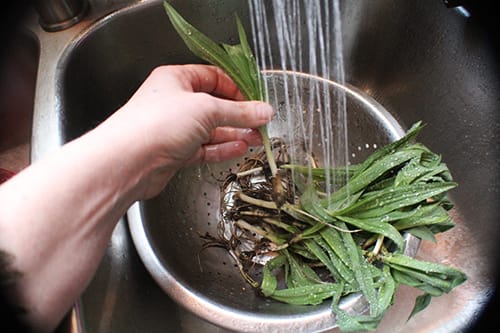
Let them dry for a few hours on a paper towel.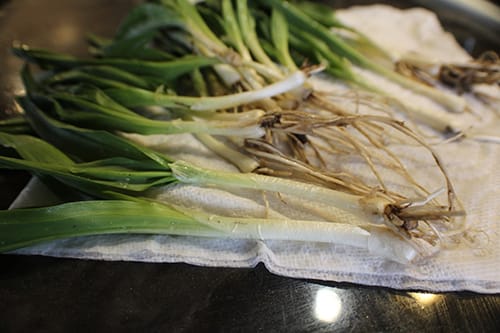
They clean up like green onions and have an outer peel that can be removed along with the dirt.
The following recipe makes a delicious and unique vinegar for salads, fish, or an array of other dishes. The raw apple cider vinegar I used for this recipe is very beneficial for gut health. Also, dipping your hands in this easy vinegar solution provides relief from itchiness and soothes skin irritation.
DIY Ramp Vinegar Recipe
You will need:
- 1 cup of white vinegar
- apple cider vinegar with the mother (enough to fill your jar)
- 2 tbsp. extra dry vermouth or chardonnay
- a few sprigs of fresh thyme
- 2 -3 dried bay leaves
- ¼ cup sea salt
- ½ cup cane sugar
- a quart size jar
- a piece of cheesecloth
- a pot to heat the brine
- measuring utensils
Steps:
- If you still need to do so, separate the bulbs from the greens to enjoy them as separate components. I love keeping the greens in for the ramp vinegar; they add so much flavor. However, the bulbs are delicious once pickled!

- Add the white vinegar, salt, vermouth, and sugar to a pot and heat to a simmer. You want the sugar and salt to be mostly dissolved.
 Then, turn it off. In the meantime, cold pack the ramp bulbs, thyme and bay leaves into your jar.
Then, turn it off. In the meantime, cold pack the ramp bulbs, thyme and bay leaves into your jar.
- Put the ramp leaves as well.

- Pour the brine into the jar on top of the cold-packed ramps and herbs.

- Complete the jar by adding the apple cider vinegar. Make sure the liquid is at least half an inch away from the rim of the jar.

- Secure the cheesecloth to the top using a ring or rubber band. Allow your ramp vinegar to rest for a minimum of two weeks before refrigerating it. Then, it should last for a few months.

- Be sure to pick it up and shake it every day.

How to Use Ramp Vinegar
Once your ramp vinegar is done, you can use it to flavor many dishes and reap its health benefits at the same time. Here are a few ideas:
Use it on fish or other seafood dishes. Add it to cabbage slaw, coleslaw, and other fresh vegetable dishes. Make salad dressing or mayo out of it. Enhance the flavor of your wilted greens by including fiery chilis such as habaneros or hot garden peppers. Add some honey or maple syrup to create a flavorful glaze.
Enjoy!

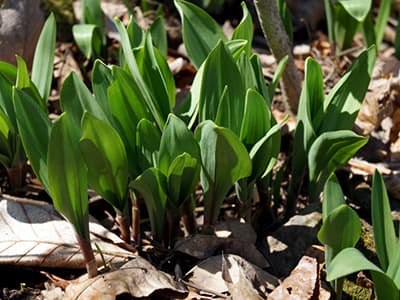
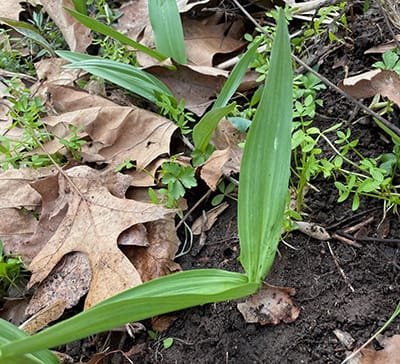
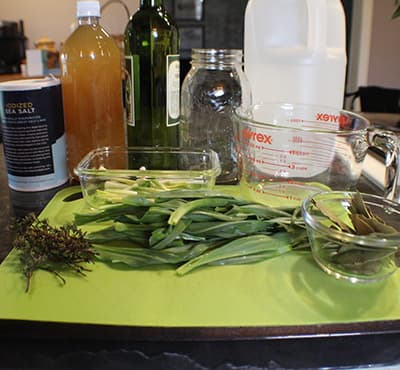
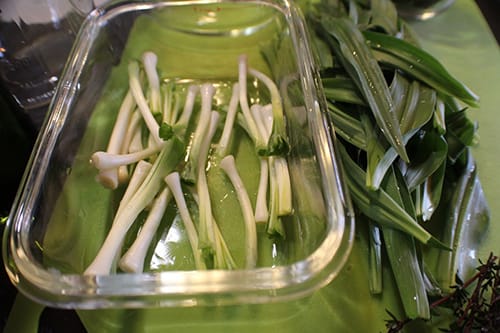
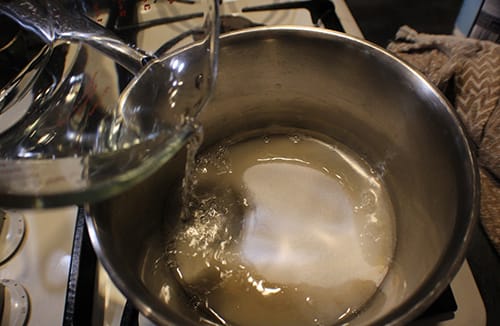 Then, turn it off. In the meantime, cold pack the ramp bulbs, thyme and bay leaves into your jar.
Then, turn it off. In the meantime, cold pack the ramp bulbs, thyme and bay leaves into your jar.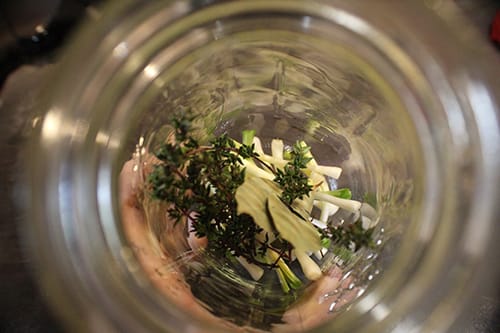
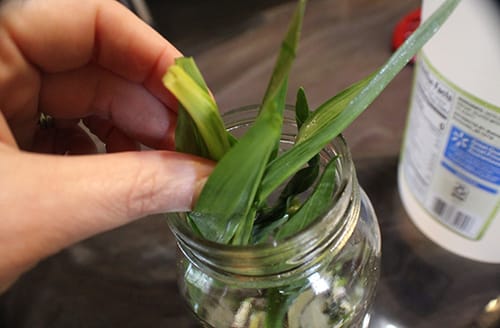
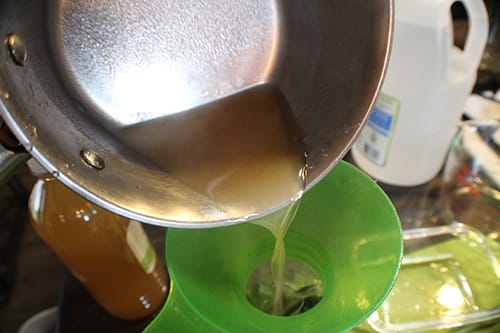
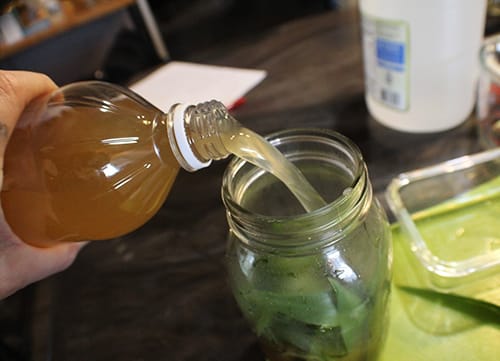
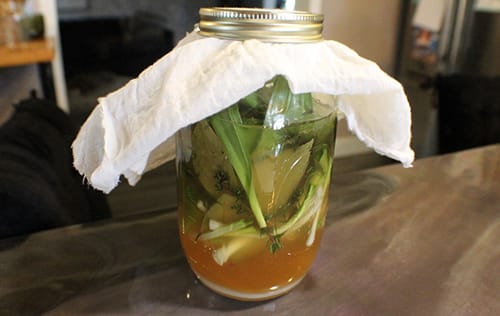
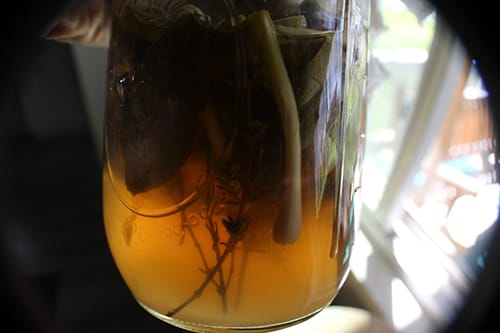

Its so sad that we’ve been taught to kill our true medicine.
Hi,
Thank you for your comment!
We hope our articles are helpful for you, and for all our community.
Many blessings and good health!
Hi, I’m living in Sweden and have sometimes difficulties to find the translations for the plants. Would it be possible to mention the latin names of the plants? That would really help a lot!
Best wishes from Sweden!
Katrin
Hi Katrin,
Thank you for supporting our work and for your feedback, we will take it into consideration!
The Latin name of Ramps is Allium tricoccum.
Many blessings and good health!
Thanks a lot for your effort in explaining and presenting the best herbal knowledge, BTW can I buy your book in ( hard copy), thanks again
linazeidanart@gmail.com